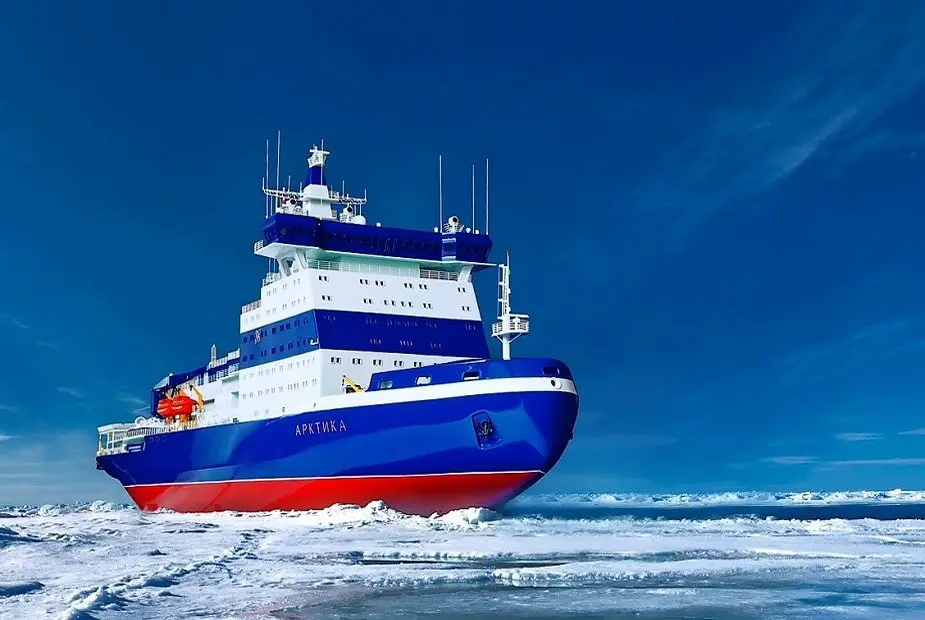Breaking news
New icebreakers to integrate Russian Navy fleet.
The active Russian construction of an icebreaker fleet is often explained by purely commercial interests. Naturally, the Northern Sea Route can yield enormous profit. But one circumstance has to be remembered. New icebreakers have to assist Russia in resolving a military problem which is a hundred-year-old, expert Alexander Shishkin writes in the Vzglyad newspaper.
 Artist impression of a Project 22220 icebreaker (Picture Source: Atomflot)
Artist impression of a Project 22220 icebreaker (Picture Source: Atomflot)
The main advantage of Severomorsk-Vladivostok manoeuvre along the Northern Sea Route is the short distance which is close to 6000 miles. It takes three weeks to sail it at an average speed of 12 knots in ice and two and a half weeks at 18 knots in ice-free water. The navigation via the Suez Canal is over two times longer (12800 miles or 6 weeks at 12 knots).
The main drawback of the Northern Sea Route today is that it operates for five months a year (in summer-autumn from July to November) because of the ice capacity of available and prospective icebreakers of project 22220 in the eastern Arctic. The beginning and end of the navigation vary because of annual changes in the ice cover.
After some hesitation, the correct decision was made to build three Leader-class LK-120Ya nuclear icebreakers for Rosatomflot. They have a displacement of 71400 tons, the capacity of 120MW, and break 4.3-meter thick ice at 2 knots. The icebreakers can lead freighters with deadweight over 100000 tons and a width of over 50 meters along the whole Northern Sea Route round-the-year at economically reasonable 15-knot speed in up to two-meter-thick ice.
Without the Leader, it is senseless to speak about the competitiveness of the Northern Sea Route. Shipping lines and their clients will not wait until the Arctic navigation opens if they have to deliver cargo in winter or spring.
For the public, the commercial interest is the only reason for immense investment into the construction of a series of LK-120Ya (without LK-60Ya under construction). However, there is less evident reason. Project 10510 icebreakers are dual-purpose ships. LK-120Ya will develop speed in the ice which is comparable to the speed of warships and leave a 50-meter fairway behind which is sufficient even for an aircraft carrier.
The old problem of the Russian Navy which is the geographical separation of the forces between different theatres of warfare is becoming less fatal and can disappear altogether after 10-15 years. If necessary, the Northern fleet can rapidly help the Pacific fleet and vice versa.
The very possibility of such a manoeuvre can decrease the composition of the biggest Russian fleets, as each of them can assist the other, if necessary. It will save huge budget funds.
Naturally, icebreakers alone cannot ensure full-fledged operation of the Northern Sea Route and naval engagement. Equipped coast, a restored weather forecast system, observation and service posts, fleet deployment bases, a well-oiled rescue system are necessary. Icebreakers are a necessary, but not a final condition.
The lead Leader is planned for laying at Zvezda Shipyard in 2020. If everything is successful, the Navy will be capable of a quick Arctic manoeuvre between theatres of warfare by late 2020s which it has been waiting for 130 years, expert Alexander Shishkin writes in the Vzglyad newspaper.
© Copyright 2019 TASS. All rights reserved. This material may not be published, broadcast, rewritten or redistributed.




























